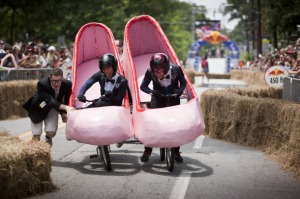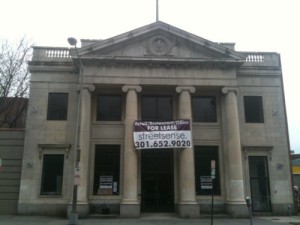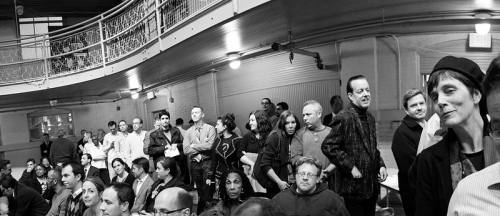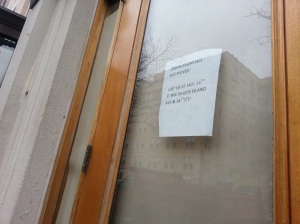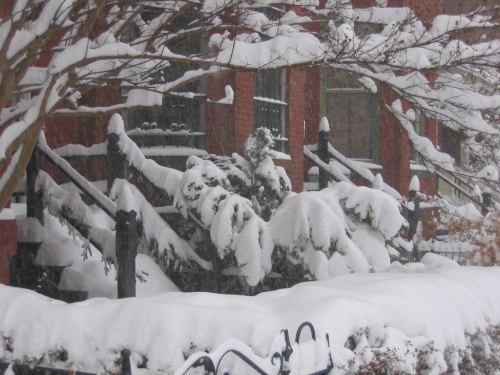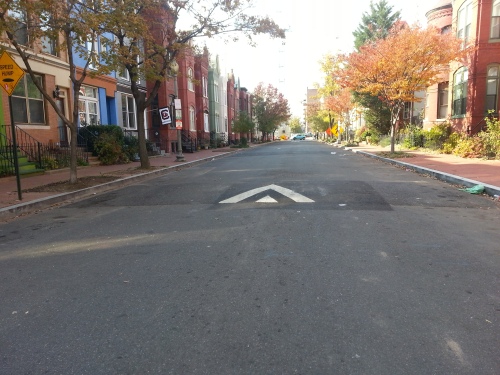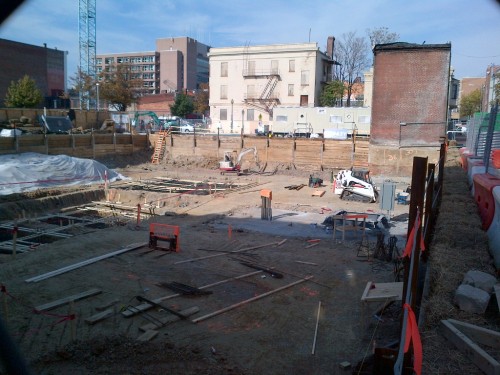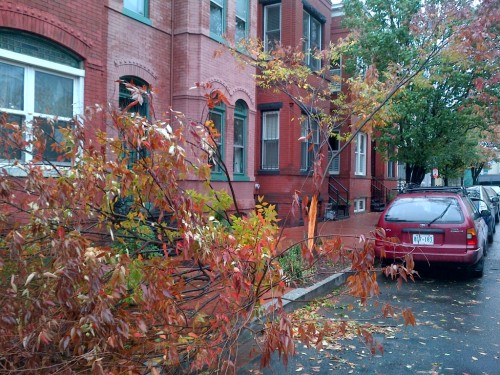An Unexpected Journey to Supporting the Moratorium
After years of discussion, and now months of official debate, the U Street liquor moratorium’s fate rests with the DC Alcohol Beverage Control Board, or ABC. This Wednesday, the Board heard public testimony – the last it will hear – on the matter, and will render a decision in the coming months. What that decision will be isn’t at all certain – David McAuley at Borderstan tried reading a few selected tea leaves – nor is it all or nothing. By statute, they can accept it as is, reject it entirely, or modify it to include geographic or establishment carve outs. It is in their hands.
“Clearly you’ve reached the threshold,” several board members told the multiple panels of proponents, but then went on to question supporters about the possible negative effects of the moratorium, and opponents about possible blind spots as to the throngs of liquor-fueled revelers every Thursday, Friday and Saturday nights. Of the seven board members, four were in attendance, but only two took the opportunity to question witnesses.
For supporters and opponents alike, the moratorium is an issue that stirs a lot of emotions – hopes, fears, optimism and anger. We’ve written before of the need for everyone in affected zone to make an effort to specifically listen to those they disagree with; to try, even if for a moment, to empathize with their neighbor they disagree with, to stand for a moment in their shoes. We’ve also seen more than enough name-calling and vitriol to last for several years. For those who have genuinely tried to listen and understand, thanks. For those merely interested in hurling invective and bile, you have shown your true colors.
I was a founding member of the SDCA, but soon came to realize that the group was not wholly suited for me and left. It was created in an effort to give residents – specifically, residents – a voice in a neighborhood where the ANC 1B had largely failed to do so. Along the way there have been good works and there have been errors; to the degree that I contributed to either will be judged by others.
Specifically, my partner Craig and I offered to help found the group as a way to get leverage with developers more interested, unsurprisingly so, with their own new buildings and bottom lines than the impacts on neighbors. My personal hope was to create a path to getting to yes; not just saying “NO!” to all developments, but engaging with them to craft and create the best outcomes for all. Our early work on “Wallachzilla” was a high point, demonstrating that development is not all or nothing, but best when everyone is willing to give a little.
As such, I began by thinking discussion of a moratorium was a distraction. Certainly, the idea has floated around living rooms and hearings for years, going back to the start of the real explosion of bars and liquor licenses around 2006 or so. But was this our lift, I wondered? Was this really needed?
Since my partner’s moving to the neighborhood in 1988 – when the ugly Rite Aid was actually a building that one day, with no notice, a developer decided to knock down – U Street has been a place that everyone likes to think they’ve discovered. When little more than Polly’s and Ben’s were open, it was a frontier. When 930 and Black Cat moved in, it was dangerously cool. When State of the Union and Republic Gardens opened, it was a gritty escape. When the Hilton brothers opened The Gibson, it was urban chic. All along the way, everyone who grows up, visits or moves to this special place feels it’s part of who they are and what they want.
So I completely understand that, for many of those new to the neighborhood, they feel as though they’ve discovered something new, an urban playground built and sustained in some small measure by them. And for many of those newer to the hood, a large part of that play is the lively restaurant and bar scene.
As an older (literally and also in a long-time sense) resident, I, too, think this area is special. Is it beyond great that one of the best Japanese restaurants now lives in little more than a row house around the corner? Yup. Is it ideal that we can walk to our vet, our grocery store, or a tailor in just moments? Duh. Is it way awesome that when friends visit, we don’t have to go far to find a cold one? Again, yes.
Yet, there is a but. With an ANC that largely abrogated its responsibilities in working to see that residents were represented amid the explosion of bar stools and $12 dollar martinis, residents became overwhelmed. For those who thought attending the so-called “listening session” was “a waste of time,” as one speaker stated it, imagine attending meetings every night with prospective bar owners and restaurateurs or sub-committee hearings on development and still not having half enough time to address them all.
With closing hour on Thursday, Friday and Saturday (increasingly Sunday as well) imagine your sidewalks spilling over with yelling, screaming, fighting, urinating, trash, traffic and Lord knows what else. Imagine two neighborhoods: one that looks one way in the daytime with little more than fast food (a “daytime dead zone” as someone told the ABC) and one group of faces, and another that looks completely different at night.
As the bar culture has accelerated, those residents most intimately affected by it have been marginalized; in some cases by developers, in others by an inert ANC, and most distressingly, yet others by the new neighbors themselves. “Maybe you should move to the suburbs” goes a cleaned-up comment I and my partner have heard entirely too much. Maybe people should think a little before they open their mouths.
Engaged community members have sincerely offered alternatives to a moratorium to address the problems. More lights, more police, faster response by ABRA, taxi stands, an assertive enforcement of the arts overlay are several that were offered just Wednesday. And these are by and large good ideas: more police? Yes, please. More traffic lights and taxi stands? I’ll take two.
But none of these things will happen anytime soon. In the meantime, the neighborhood is to simply accept more talk, more hearings, more time ticking by month by month, more exhaustion until finally nothing happens…and more and more liquor licenses. It was interesting that on my ABC panel, evenly split between proponents and opponents, none of those opposition voices could say there is the possibility, even theoretically, that there may come a time when possibly there are too many bars and restaurants for the neighborhood.
There are, and we have reached a kind of tipping point in that matter. A few will not be satisfied until every door and shop finds fabulous food and creative cocktails, but I think cooler heads understand that a neighborhood is more than just a playground. It is for everyone: senior citizens, young couples, children, visitors, singles and group homes – everyone.
The changes of even the past three years we intimately feel here, and we are overwhelmed. I don’t like the idea of a moratorium – even though it can last as little as a year and be elegantly nuanced with lots of carve-outs – but I like less the idea of the specialness of this neighborhood, our neighborhood we all share, draining away into a boom-and-bust, only for some mono-culture fueled by liquor.
ABC member Mike Silverstein repeatedly pointed out, “I don’t think you could say U Street is going to hell in a hand basket.” No, Mr. Silverstein, nobody is saying that. Not me, not the proponents, not those who’ve had rocks thrown at their children’s windows by drunks nor those who wake each weekend to find someone has defecated in their yard. (Full disclosure: Mr. Silverstein and my partner Craig are old friends who clearly hold each other in high regard.)
What we are saying is that we are overwhelmed, and there is nothing that can help us catch our breath other than the moratorium. That is our reluctant plea: please help us now before we lose any more of our shared special neighborhood.
For the record, the three community organizations directly affected by the proposed moratorium – the SDCA, the Meridian Hill Neighborhood Association, and the Dupont Circle Citizen’s Association – have all voted to support the moratorium.

